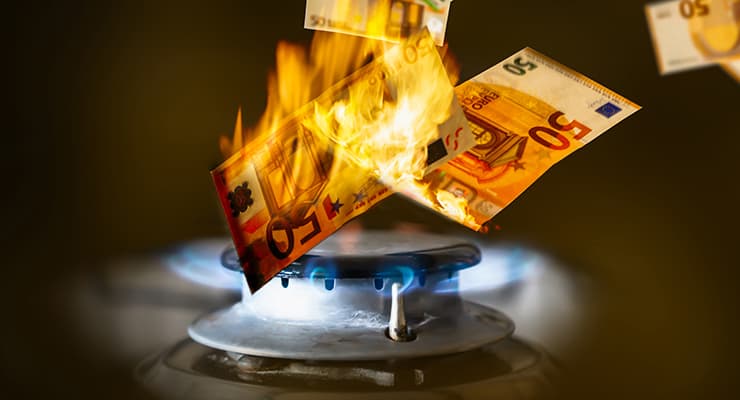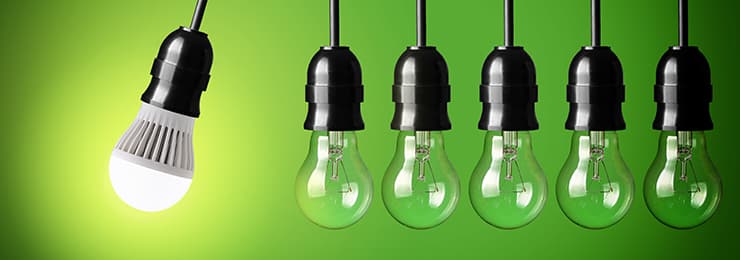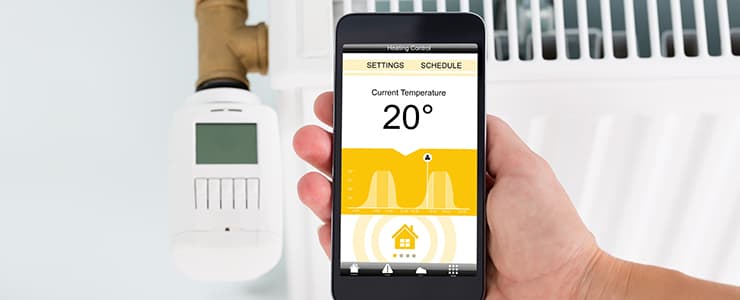
Who's going to pay for that?
Exploding energy and food costs: even small steps can help reduce costs.
Expenses in the food service industry have risen immensely, and it's putting increasing pressure on catering companies, restaurant owners, canteen operators and every company in the food service sector. So what now? What can be done? What kinds of measures would help?
The two big cost drivers are easy to identify. Financial expenditures for energy and food are the economic factors currently hitting the expense column hard.
For example, the price of electricity for industry in Germany is currently five times as high as it was a year ago. On 2 August, 2022, a megawatt hour of electricity on the Leipzig European Energy Exchange (EEX) was being traded for 398.50 Euro. This is over five times as much as one year ago, when the price was 76.10 Euro.
Close your eyes and hope for the best?
There are two things you should do in the current situation: keep calm and act quickly. If you start identifying cost drivers, examining & optimizing processes and quickly implementing changes today, you'll see immediate success – there are absolutely opportunities for countering this price scenario. By optimising day-to-day operations, up to 10 percent of your total energy costs can already be cut.

With minimal technical measures, it's also easy to reduce your energy costs by another 10 percent, for example by using LED lighting and automated lighting systems! One hundred 11-Watt LED bulbs which replace one hundred 60-Watt incandescent bulbs can achieve energy cost savings of over 5,000 Euro over a span of 8 years. Additional costs can be cut through time control, dimmer switches and motion/presence detectors.
Cost reductions are also easy to achieve when it comes to heating. For example, make sure you have the right room temperature set! Lowering the room temperature reduces heating costs by round 6% for each degree! Regularly cleaning and maintaining the heating system can also reduce costs. Cleaning a heavily soiled heating boiler can result in energy savings of up to 20%.
Using thermostat valves on radiators is the alpha and omega of saving energy. They regulate the hot water flow based on the room temperature. Insulated pipes minimise energy loss considerably! 20 metres of uninsulated pipelines result in additional annual consumption of round 5,000 kilowatt hours!

Exploding food prices!
In addition to energy, food prices have also shot up explosively, but there are a few options for quickly and sustainably lowering expenses in this area as well. The first step is to optimise meal plans or menus.
Adding more salad, vegetables, legumes and fruit, while reducing the amount of meat, cuts down on the cost of goods. This comes down to the fact that the price of these items is increasing less compared to that of meat. That doesn't mean the price of these dishes is dropping, though. The fact that vegetarian and vegan food items often require more time and manual labour for preparation should also factor into the calculation.
Oft-forgotten vegetables like parsnips and turnips can certainly make a dish more interesting and aromatic as well, while serving as a diversion from more expensive meat and fish.
It pays to take action!
If you avoid sticking your head in the sand like an ostrich and instead take action, you can at least do something to fend off crushing expenses. Critically evaluating operational energy consumption, examining & optimising processes and being creative when it comes to food offerings are the first steps in the right direction!
 "If you want to implement modern event catering, you need a partner like B.PRO."
"If you want to implement modern event catering, you need a partner like B.PRO.""YOU'RE HAPPY TO GO THE EXTRA MILE" Rui Torres da Silva, catering manager at the Schwabenlandhalle event venue in Fellbach, and Martin Kohler from B.PRO talk about modern event catering, well thought-out food services – and a shared passion.
 Reliable supply, new responsibility
Reliable supply, new responsibilityCommercial catering does more than just supply food. A study sheds light on their growing contribution to health, sustainability and participation – and shows where challenges and opportunities exist.
 Eye-catcher with added value
Eye-catcher with added valueA customised look for catering products brings real benefits for managers and guests. Whether colour accents, decors or logos, B.PRO offers a wide range of options for personalising food serving counters and other equipment.
